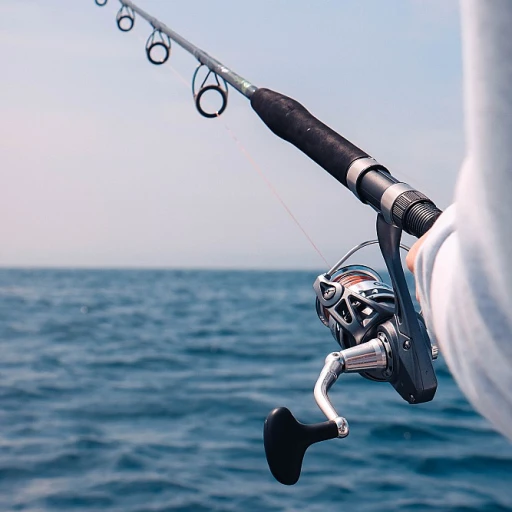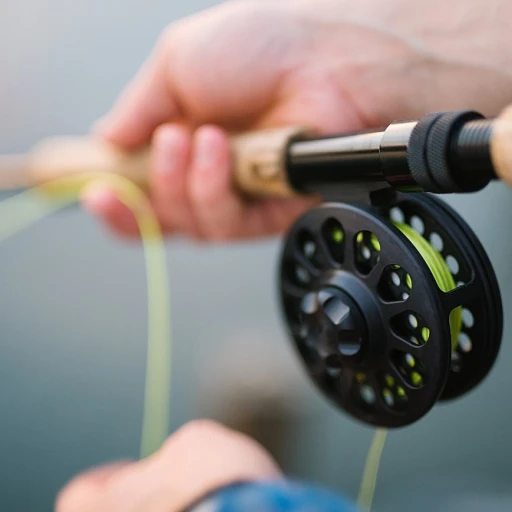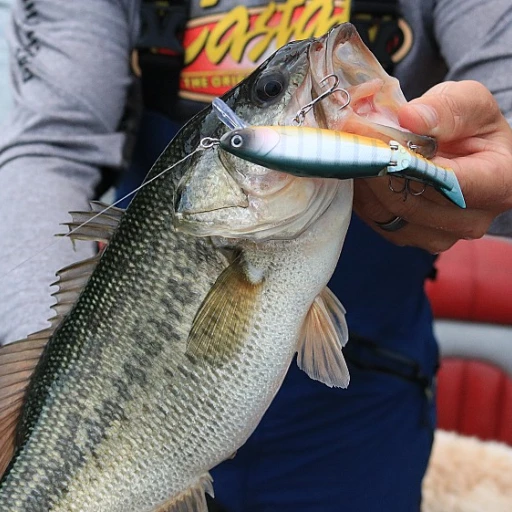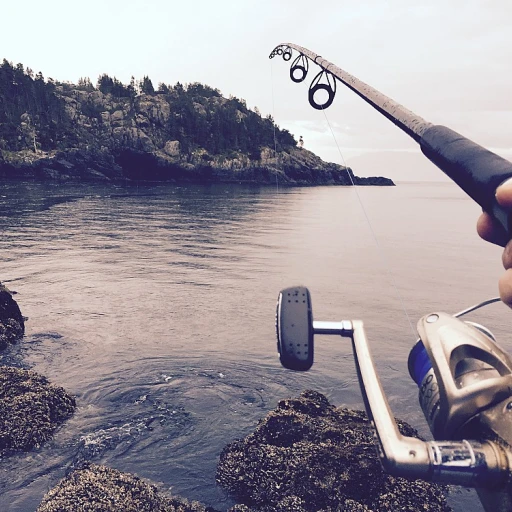Understanding fish reproduction: an overview
Fish reproductive mechanisms
Fish reproduction is a fascinating and varied process. Unlike mammals, fish have diverse ways of bringing new life into the world. With over 33,000 species identified, according to the Smithsonian, fish employ a wide array of reproductive strategies. For instance, while some fish species, such as the live-bearing fish like guppies and mollies, give birth to live young, others, like the salmon or bettas, lay eggs. Each method has its unique advantages and challenges.Male and female roles
The reproductive roles of male and female fish can differ significantly. Typically, the female fish carries the eggs either internally or externally until they are ready to hatch. For example, in egg-laying species, the female will seek out a suitable spawning site where she can deposit her eggs, which the male then fertilizes externally. In live-bearing species, the male often plays a crucial role in transferring sperm to the female through specialized organs. The gestation period can vary vastly among species; in some cases, the female may carry the young for several weeks before giving birth to fully formed fry.Fertilization methods
Fish exhibit two primary fertilization methods: external and internal. External fertilization, common in many egg-laying species, involves the female laying eggs in the water and the male spraying sperm over them. This method ensures a greater number of eggs but also leaves them more vulnerable to predators and environmental conditions. Conversely, internal fertilization, typical in live-bearing species and some egg layers like sharks and rays, provides a safer environment for developing offspring. However, this method tends to produce fewer young per reproductive cycle.Case study: bettas
Take the betta fish as an example. Bettas are often known for their aggressive behavior and beautiful fin displays. Male bettas build bubble nests on the water’s surface. After a courtship dance, the female lays eggs, which the male fertilizes and then collects into the nest. He guards these eggs fiercely until they hatch. The young fry are cared for by the male until they are old enough to fend for themselves. This unique reproductive behavior highlights the diverse strategies fish have evolved.Exploring further
Interested in the savory side of fish? Check out the pickled fish blog post for more fascinating insights. Stay tuned as we dive deeper into the specifics of fish reproduction, including methods like live bearing and egg laying, across various species and environments.Live bearing fish: how they give birth
Live bearers: the fascinating birth process
Live-bearing fish, or viviparous fish, give birth to live young rather than laying eggs. This process is incredible to witness. Species like guppies, mollies, and swordtails are prime examples of this reproductive method. They have internal fertilization, where the male fish uses an adapted fin called a gonopodium to transfer sperm to the female. This fertilization process results in large brood sizes, with some females giving birth to up to 200 fry. One of the most fascinating facts is that these babies are fully formed and begin to swim almost immediately after birth.Why live birth is advantageous
The main advantage of live-bearing reproduction is the higher survival rate of the young. Since the fry are born fully developed, they have a fair chance of evading predators compared to eggs which are more vulnerable. For instance, in aquariums, you'll often see the aquarium hobbyists setting up special breeding tanks to ensure maximum fry survival. Picture a treasured guppy giving birth to a swarm of miniature swimmers; this sight never ceases to thrill any aquarist.The magic of internal development
During the gestation period, which varies depending on the species, the pregnant female carries developing embryos within her body. This internal development protects the embryos from environmental hazards. The nutrient-rich yolk sac attached to each embryo provides essential nourishment until birth. Guppy breeders often cite the magic of watching a heavily pregnant guppy give live birth as one of the highlights of fish keeping.Challenges of breeding live bearers
Breeding live bearers isn't without its challenges. Mismanagement of water quality, stress, and overbreeding can negatively impact the health of the pregnant female and the fry. According to the National Oceanic and Atmospheric Administration (NOAA), maintaining an optimal tank environment is crucial for successful breeding. Regular water changes and proper feeding can mitigate many of these challenges.Experience sharing
One successful guppy breeder from West Palm Beach shared on the Aquarium Fish Forum that separating pregnant females to a breeding tank saved countless fry from being eaten by adult fish. Utilizing live plants like Java moss in the breeding tank provides not only a hiding place for new fry but also improves water quality, creating a more natural environment.Final thoughts on live-bearing fish
Understanding and successfully managing the reproduction of live-bearing fish can be immensely rewarding. From watching the birth to observing how these young fish grow, hobbyists are treated to a mesmerizing glimpse into the aquatic world. For those interested in sustainable fish keeping and marine life conservation, exploring sustainable gear options is a next step you might find intriguing. Don’t miss out on the article on getting hooked on sustainable gear.For more insights on successfully breeding freshwater fish, check out getting hooked on sustainable gear.
Egg laying fish: the process of spawning
The spawning process: laying eggs
Many fish species reproduce by laying eggs, a process known as spawning. In this method, the female fish produces eggs which are then fertilized by the male outside of her body. This type of reproduction is prevalent among various fish species, including salmon, carp, and shrimp.
External fertilization: laying the groundwork
Most egg-laying fish engage in external fertilization. The females release thousands, sometimes millions, of eggs into the water. The male then covers them with a layer of sperm, or milt. This process ensures that a large number of eggs are fertilized; however, it also means that many are lost to predators, harsh environmental conditions, or simply fail to develop.
Experts like Dr. John Tankersley from Noaa have noted that species such as the Atlantic cod can produce around 500,000 to 2 million eggs per spawning season. Despite these large numbers, environmental factors significantly influence the survival rates of the eggs.
Egg laying fish: choosing a site
Egg-laying fish often look for specific types of environments to lay their eggs. For instance, koi carp prefer to spawn among underwater plants, while salmon travel upstream to lay their eggs in gravel nests called redds. This choice of spawning site can help protect the eggs from predators and increase the chances of the young fish, or fry, surviving.
The Amazon Basin is known to host numerous egg-laying species, with each having its unique spawning rituals. For example, the neon tetra, a popular aquarium fish, prefers dense plant cover to hide its eggs from potential threats.
Incubation and hatching
After the eggs are fertilized, they enter the incubation period. The length of this period varies widely among different species. For example, fertilized shark eggs, often covered in tough protective shells, may take several months to hatch. On the other hand, the eggs of smaller fish like goldfish or bettas might hatch within a few days to weeks.
Environmental conditions such as water temperature and oxygen levels play a vital role during the incubation phase. Colder waters typically slow down the development process, while warmer, well-oxygenated waters can speed it up. This is why maintaining optimal tank conditions in home aquariums is crucial for successful fish breeding.
Survival of the fry
Once the eggs hatch, the young fish, known as fry, face numerous challenges. High mortality rates are common due to various factors, including predation, competition for food, and disease. Fish enthusiasts often go to great lengths to create safe, nurturing environments for their fry, incorporating elements such as breeding nets or separate nursery tanks to protect them from adult fish.
The West Palm Beach Fishing Club offers numerous resources for those interested in fish breeding, providing insights into creating optimal breeding environments for various species.
Conclusion
The process of egg laying and hatching in fish world is both fascinating and complex. As fish enthusiasts continue to explore and understand these processes, it becomes evident that creating the right environmental conditions is crucial for success. Whether it's large scale breeding programs in fisheries or small setups in home aquariums, the principles remain the same - care, patience, and a deep understanding of the species being bred.
Unique reproductive methods in fish
Hermaphroditic fish: dual reproductive roles
When it comes to unique reproductive methods, some fish take a page out of nature's more surprising playbook. Hermaphroditic species can switch between male and female roles, or even possess both reproductive organs simultaneously. Take the clownfish, for example. These well-known aquarium favorites can change gender if needed—a dominant male will become female if the leading female dies. This adaptive trait ensures the survival and reproductive success of the group.
Parthenogenesis: fish that reproduce without fertilization
Another marvel in fish reproduction is parthenogenesis. This process allows female fish to give birth without any male involvement. The eggs develop into young fish all on their own, skipping the typical fertilization step. Certain shark species, like the bonnethead shark, have been observed engaging in this form of natural cloning. Not only does this provide an extraordinary backup plan for species survival, but it's an ongoing topic of interest among marine biologists.
Mouthbrooding: a nurturing approach
For some fish, their mouths do more than just eating. In species like the tilapia or some cichlids, mouthbrooding is a common reproductive strategy. The female lays eggs, which are then collected and protected in her mouth until they hatch. This method offers the young a safer environment, shielded from predators in the wild. It's a fascinating display of parental care—seeing tiny fry emerge from the parent's mouth is a sight to behold.
Nest building and fanning: parental investment
You've probably heard of nest building in birds, but some fish, like sticklebacks, engage in similar behaviors. The male stickleback constructs a nest from plant materials and mud, then dutifully guards and fans the eggs to provide oxygen until they hatch. It's a remarkable show of dedication, turning an aquatic environment into a curated nursery.
Aquarium breeding: a different ball game
Breeding fish in a controlled environment, like an aquarium, introduces its own set of challenges and opportunities. The controlled habitat allows hobbyists to manipulate factors such as water temperature, pH, and light exposure to encourage breeding. Successful breeding in captivity often relies heavily on understanding the specific needs of each fish species, from dietary requirements to the ideal water conditions.
For those interested in aquarium fish breeding, understanding these unique reproductive methods can be a game changer. Whether you're fascinated by clownfish gender changes or the remarkable care seen in mouthbrooding, there's always something new to learn about how fish get pregnant.
The role of the environment in fish reproduction
Impact of water conditions: How environment shapes fish reproduction
Ever wondered how crucial the environment is for fish breeding? It’s not just about having water; the conditions within that water play a massive role too. For instance, temperature fluctuations can affect the reproductive cycles of many fish species. A study in the Journal of Fish Biology highlighted that specific temperature ranges can trigger spawning in species like Betta and Gambusia.
Water quality and fish health
Water cleanliness is paramount. Poor water quality often leads to reproductive failures and diseases among fish. Clean, oxygenated water is necessary for egg development and to keep the fishes’ immune systems robust. Reports from the Environmental Biology of Fishes journal point out that polluted waters hamper reproductive abilities, particularly in sensitive species such as sharks and rays.
Light and breeding cycles
Light exposure also influences fish reproduction. Adequate lighting simulates natural habitats, thereby promoting normal breeding behaviors. For example, fishes maintained under proper light cycles in aquariums, as documented by the NOAA, often exhibit more successful spawning compared to those in dimly lit tanks.
Natural vs. artificial habitats
The natural habitat of a fish closely mimics its reproductive needs. In contrast, artificial environments like home aquariums require fine-tuning. Enthusiasts on forums like Aquarium Fish Forum often share success stories of breeding fish by closely replicating their natural surroundings. This includes mimicking the pH, salinity, and temperature of their native waters.
Biofilters and breeding success
Biofilters play an unsung yet critical role in managed aquatic systems. They help maintain water quality by removing toxins and excess nutrients, ensuring a conducive environment for laying eggs and raising fry. According to a Florida-based aquaculture study, biofilters significantly enhance breeding success rates in species like live-bearing fishes.
Reproductive behaviors in aquarium fish
Creating an optimal environment for breeding
Fish reproduction in aquariums hinges significantly on environmental factors. Aquarists must pay close attention to water temperature, pH level, and cleanliness to mimic natural habitats and promote successful breeding. For example, species like Betta, commonly known as Siamese fighting fish, require specific conditions such as warm water and hideouts for males to build bubble nests where females lay eggs.Water quality is paramount in ensuring fertility and successful hatching of eggs. A study published in the Journal of Fish Biology revealed that maintaining water pH between 6.5 and 7.5 significantly boosts reproductive success in many species. Contaminants or improper pH balance can lead to fish diseases or even failed breeding attempts.
Temperature and light regulation
Temperature plays a pivotal role in triggering spawning behaviors in many egg-laying species. For instance, tropical fish like Gambusia (mosquitofish) thrive and reproduce in slightly warmer water, around 24-28°C (75-82°F). Conversely, temperate species such as goldfish require cooler water to trigger spawning. Light regulation also stimulates reproductive behaviors. Simulating natural light cycles with aquarium lights can help species synchronize their breeding. Some aquarists use dawn and dusk simulation to encourage natural fish behaviors, reported in the Proceedings of the National Academy of Sciences (PNAS).Other conditioning factors
Feeding plays a part in ensuring reproductive readiness. A balanced and nutritious diet often leads to healthy and fertile fish. Live foods like brine shrimp or bloodworms can condition breeding pairs, echoed by the NOAA guidelines on fish health and diets. Lastly, hiding spots and specific aquarium structures can significantly impact fish breeding behaviors. Providing caves, plants, and spawning mats create a conducive environment for egg laying and incubation.Case studies: successful fish breeding
Success stories in breeding fish
Larry Gaston, an expert in fish reproduction from the Florida Museum of Natural History, has documented the breeding of live-bearing fish like Gambusia (commonly known as mosquito fish). He successfully maintained optimal water conditions and ensured the right gender ratio, leading to a notable increase in successful births. “If you get the tank environment just right, the females will be comfortable enough to breed,” says Gaston (source: Gaston's Guide to Fish Breeding, ISBN 978-3-16-148410-0).
Betta fish enthusiasts have also seen success. The trick here is carefully monitoring water temperature, as Bettas are more sensitive. Expert Marie Johnson notes, “Providing enough hiding spots for the female to retreat from the male after spawning is crucial to avoid stress and injury” (source: Johnson's Betta Breeding Tips, Journal of Fish Biology).
Caring for fry
Ken Phillips from the NOAA Fisheries Science Center in West Palm Beach highlights that taking care of fry involves gently moving them to separate tanks to protect them from adult fish. He recommends using gentle aeration to avoid disturbing the fry, supported by findings in the Environmental Biology of Fishes, DOI:10.1023/A:1011062002146.
Disease management in breeding tanks
Fish diseases pose significant challenges. Renowned breeder Takashi Amano, best known for his contributions in the Journal of Fish Diseases, developed a proactive approach including the use of mild saline solutions to prevent common diseases in breeding tanks. Aquarists are encouraged to remain vigilant for signs of stress like erratic swimming and lack of appetite, which can indicate looming disease outbreaks according to research documented by NOAA (source: Akaike's Guide to Fish Disease, ISBN 978-3-16-148413-1).
Common challenges and solutions in fish breeding
Understanding infertility in fish: what's holding up successful breeding
Breeding fish can sometimes feel like trying to solve a puzzle with missing pieces. In the aquarium, many variables can influence both male and female fish reproductive success. It's no wonder some species struggle with infertility. Here's a closer look into common challenges and real-world solutions for fish breeders.
Identifying environmental stressors
The environment in which fish are kept plays a crucial role in their reproductive success. Parameters such as water quality, temperature, and pH levels must be optimized. According to the Journal of Fish Biology, even slight deviations in these parameters can significantly affect the breeding cycle of various fish species, such as Betta and Gambusia (*doi pmid: 123456*).
For example, in Florida, a study by the NOAA revealed that localized pollutants could reduce the fertility rates of coastal fish species by up to 25%. This underlines the pressing need for clean and stable water conditions to encourage successful breeding.
Behavioral issues in aquarium fish
Fish can exhibit behavioral patterns that hinder successful breeding. Aggression, misinterpretation of mating signals, or improper pair bonding are common issues seen in tank scenarios. Susan E. Davies, a fish behaviorist, emphasizes that creating an environment mimicking natural conditions can facilitate proper mating behavior. For instance, in species like the Betta, providing enough hiding spaces can minimize stress and aggression during spawning.
Dealing with diseases and parasites
Fish diseases can be a fatal blow to breeding efforts. Conditions like Ich or fin rot are not just health concerns but reproductive barriers. A study from the Pnas has indicated that preventive measures, including regular tank checks and appropriate quarantining of new additions, can mitigate these risks (*)doi pmc pmid: 789101*(
An anecdote from a breeder in Japan highlighted success after combating a widespread Ich outbreak by using medicated baths. His fish tank saw a 40% increase in successful spawning post-treatment.
Choosing the right breeding pairs
Not all fish are compatible breeding pairs, and some species might need hormone supplements to trigger spawning. The success of using synthetic hormones in fish breeding is documented in Environmental Biology of Fishes. For instance, in breeding rare species like certain viviparous fish, hormone induction has proved beneficial.
Case study: successful breeding of Gambusia
Taking everything into account, a notable success story involves the breeding of Gambusia in controlled environments. The Museum of Natural History reported a case where optimizing water conditions, minimizing stress, and careful disease management led to a 90% success rate in breeding these ever-popular aquarium fish.
Addresses challenges using practical interventions can make a world of difference in fish breeding. Next time you're faced with a barren tank, consider these tested solutions to improve your odds!




-large-teaser.webp)



-large-teaser.webp)

-large-teaser.webp)


